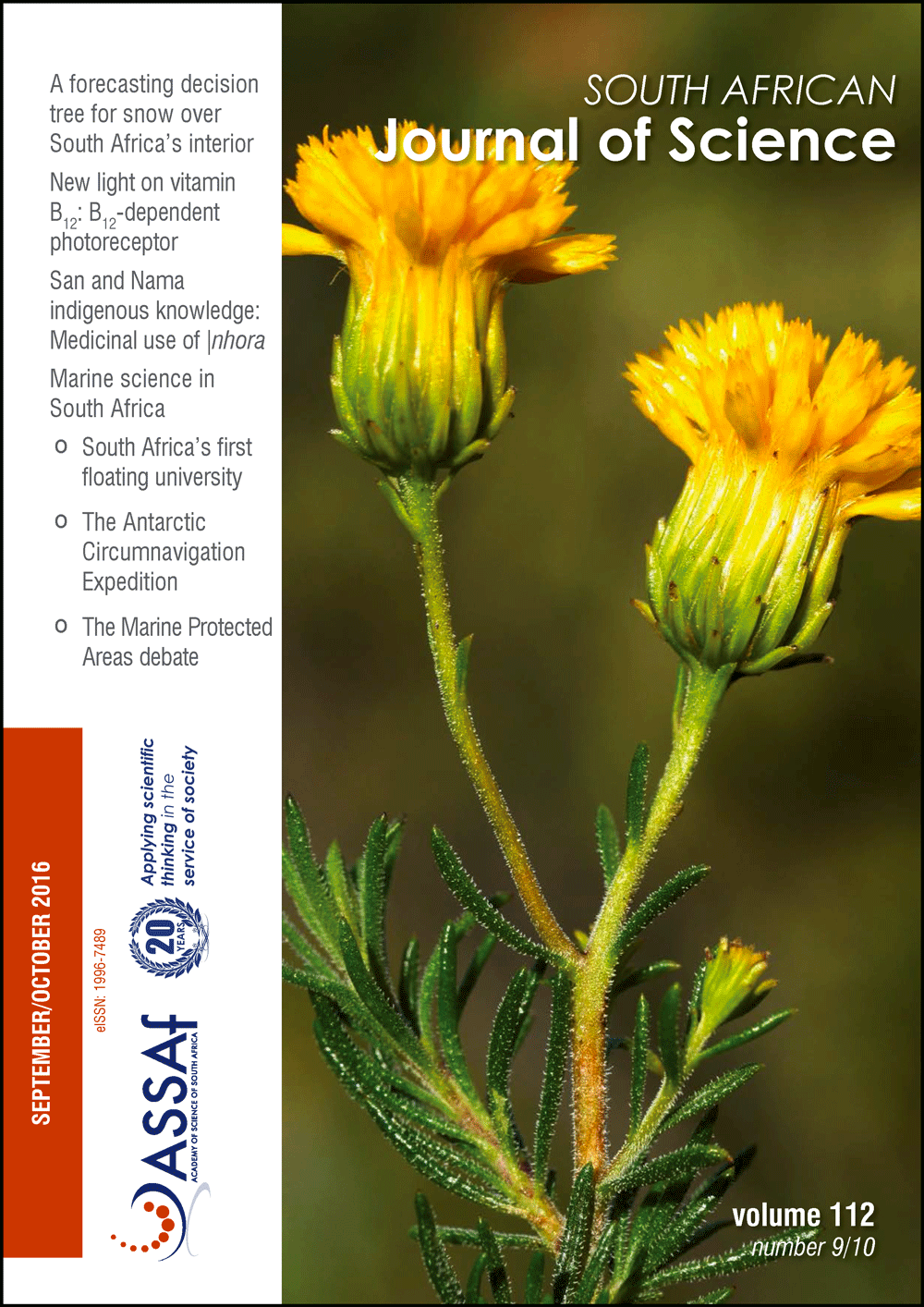Do arthropod assemblages fit the grassland and savanna biomes of South Africa?
DOI:
https://doi.org/10.17159/sajs.2016/20150424Keywords:
species distribution, arthropod trophic groups, cluster analysis, biome-specificity, arthropod species compositionAbstract
The long-standing tradition of classifying South Africa’s biogeographical area into biomes is commonly linked to vegetation structure and climate. Because arthropod communities are often governed by both these factors, it can be expected that arthropod communities would fit the biomes. To test this hypothesis, we considered how well arthropod species assemblages fit South Africa’s grassy biomes. Arthropod assemblages were sampled from six localities across the grassland and savanna biomes by means of suction sampling, to determine whether the two biomes have distinctive arthropod assemblages. Arthropod samples of these biomes clustered separately in multidimensional scaling analyses. Within biomes, arthropod assemblages were more distinctive for savanna localities than grassland. Arthropod samples of the two biomes clustered together when trophic groups were considered separately, suggesting some similarity in functional assemblages. Dissimilarity was greatest between biomes for phytophagous and predacious trophic groups, with most pronounced differentiation between biomes at sub-escarpment localities. Our results indicate that different arthropod assemblages do fit the grassy biomes to some extent, but the pattern is not as clear as it is for plant species.
Significance:- Provides the first comparison of arthropod composition between grassland and savanna biomes of South Africa.
- Explores whether these two biomes show distinct arthropod assemblages.
- Documents the characteristics of arthropod assemblages.
- Confirms that plant assemblages of biomes are more distinguishable than arthropod assemblages.
Published
Issue
Section
License

All articles are published under a Creative Commons Attribution 4.0 International Licence
Copyright is retained by the authors. Readers are welcome to reproduce, share and adapt the content without permission provided the source is attributed.
Disclaimer: The publisher and editors accept no responsibility for statements made by the authors
How to Cite
- Abstract 727
- PDF 679
- EPUB 211
- XML 243











.png)